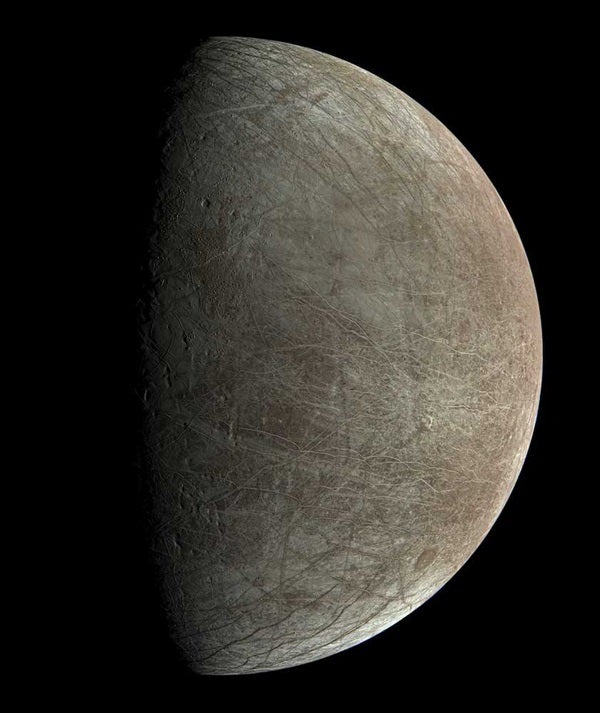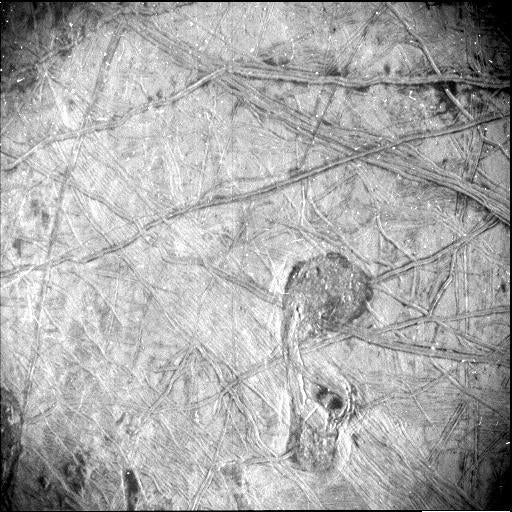Juno captured the dark side of Jupiter’s moon during its flyby on Sep. 29. The craft came within 219 miles (352 kilometers) of Europa’s surface, obtaining the highest resolution view (below) of this ocean world.
At first glance, you might think you’re looking at a slide under a microscope rather than an image of an ice coated world. In reality however, this view covers 93 miles (150 km) by 125 miles (200 km) of Europa’s frozen landscape, including long, hilly tracks jutting out from the surface and a comma-shaped water ice blob towards the southeast spanning some 42 miles (67 km) by 23 miles (37 km). The white speckles, reminiscent of snowflakes, are signatures from high energy particles resulting from the extreme radiation surrounding the moon. And the dark areas (at the upper right, center right, and lower left) could be an indication of activity below the crust erupting onto the surface.
Europa is one of the worlds in our solar system that scientists believe is harboring a salty ocean miles below its icy shell. “This image is unlocking an incredible level of detail in a region not previously imaged at such resolution and under such revealing illumination conditions,” said Heidi Becker, the lead co-investigator for the SRU, in the press release. “These features are so intriguing. Understanding how they formed – and how they connect to Europa’s history – informs us about internal and external processes shaping the icy crust.”
The photo was taken using the Juno’s Stellar Reference Unit (SRU), the camera used to orient the spacecraft. SRU works well with low-light conditions, capturing the details of the surface in greater detail. JunoCam, the spacecraft’s public-engagement camera, also caught four images of Europa during the flyby. These are being processed by citizen scientists.
The Juno mission primarily studies Jupiter but during its 45 trips around the planet since 2011, it has also snapped pictures of Jupiter’s rings and Ganymede, the solar system’s largest moon. Juno plans to make its debut at Io, the solar system’s most volcanic body, in 2023.











